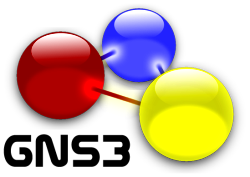
GNS3 is an an open source emulation program for anyone who want to pursue a career on Cisco Routing. It's build on dynagen and dynamips foundation.
I've provided you simple steps on how a topology works on GNS3:
- Download GNS3 from http://www.gns3.net/download.
- Install GNS3.
- Run the program and click option 1 on Setup Wizard. "Configure and test the path to Dynamips. Also check that the working directory is valid". If you exit the Set up wizard, go to Edit | Preferences.
- Select a Project Directory. This is the path where your projects are saved.
- Select an Image directory. This is the path where IOS images are stored.
- Select Dynamips and click Test button. This will return a Dynamips "successfully started" message if Dynamips is running.
- Select option 2. Add one or more uncompressed IOS images.
- You have to take note of this: The IOS image in BIN format are compressed. You can load IOS image UNPACKED file for faster booting.
- Drag and drop devices (with IOS image) to build a topology.
- Add router modules (Double click the image, select the device and add slot/s on Slots Tab).
- Cable the connections ( Click add a link button on GNS3's toolbar and select type of cable).
- Power the devices by clicking the play button on GNS3's toolbar.
Some helpful tips:
Use the Idle PC feature to lessen the CPU usage of dynamips when the device is idle. To do this:
Right click the device, select idle PC, select the best idlepc values and select ok.
You can use wireshark captures to check packet data. To do this:
Right Click on the link between two devices, select Capture, then select a source. Go to Edit | Preferences | Capture and modify the settings to make this one work.

No comments:
Post a Comment